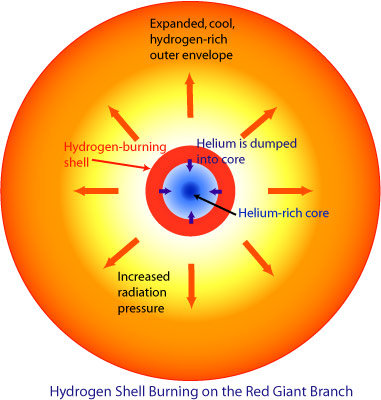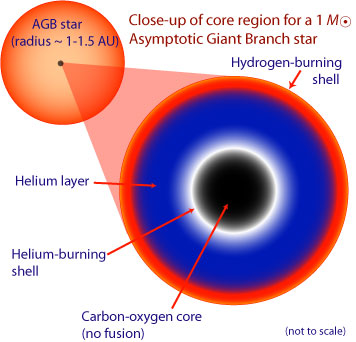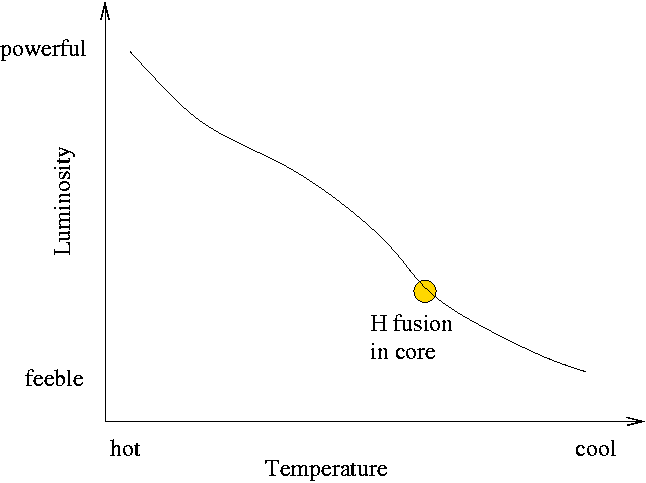
Post Main Sequence Evolution for Low Mass Stars:
Structure of a hydrogen shell burning star:

As the core of the sun becomes fully Helium, its density will increase to about 15,000 g/cc at which point degenerate electrons will comprise about 50% of the total internal pressure.
This reaction now tries to happen:

The core temperature as this point is insufficient for the fusion of Helium and so the core contracts and heats, but the degeneracy condition of the core means that the heating does not produce additional pressure (expansion) of the core.
This leads to a thermal runaway, culuminating in the Helium Flash or the relatively sudden onset of Helium burning.
The effects of the Helium flash are to greatly increase available phase space for the electrons and hence to remove the degeneracy from the core.
The core settles down, back to an ideal gas, with Helium to Carbon fusion as the energy source. The star assumes a slightly new structure and becomes what is known as a Horizontal Branch star where its luminosity remains constant but its surface temperature slightly increased from where it was on the Giant Branch.
Throughout the period of core collapse, the heat generated by this collapse is transferred to shells around the star which begins to burn Hydrogen, and later Helium. Eventually after the core Helium has been exhausted the structure of the star looks like this:

Note that the radius of the star at this stage is very large (thousands of times its initial radius) and so its mean density is very low. This means the outer part of the star is only weakly bound, by gravity, to the core. Instabilities in the helium-burning shell, known as thermal pulses, can impart sufficient impetus to the outer envelope of the star to simply drive it away.
Note that this particular phase of stellar evolution (the thermal pulse phase) is still not well understood and remains fairly esoteric, so we will not probe it in any further detail.
Eventually you will get to a stage of double shell burning that will blow the outer layers of the star away, revealing a hot stellar core (which then ionizes these outer layers). This hot stellar core is destined to be a white dwarf, but it is not in that stage yet).
The outer layers glow through recombination emission and the result is one of the more spectacular objects in the sky, namely a Planetary Nebulae:


When its all said and done, the evolutionary track of a low mass star in the HR diagram looks like this:

Post Main Sequence Evolution of Massive Stars
Is a lot more complicated by ultimately you get to this onion-layer structure:

Nucleosynthesis of elements above helium is less efficient so that each successive reaction produces less energy per unit mass of fuel. This means that the reactions occur at greater rates so that radiation pressure balances gravity. Whilst a massive star may spend a few million years on the main sequence, its helium core-burning phase may be a few hundred thousand years. The carbon burning phase lasts a few hundred years, neon-burning phase a year, oxygen-burning half a year and the silicon-burning only a day.